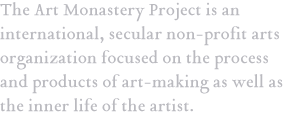Emerson on Art, part 4
The reference of all production at last to an aboriginal Power explains the traits common to all works of the highest art,–that they are universally intelligible; that they restore to us the simplest states of mind; and are religious. Since what skill is therein shown is the reappearance of the original soul, a jet of pure light, it should produce a similar impression to that made by natural objects. In happy hours, nature appears to us one with art; art perfected,–the work of genius. And the individual, in whom simple tastes and susceptibility to all the great human influences overpower the accidents of a local and special culture, is the best critic of art. Though we travel the world over to find the beautiful, we must carry it with us, or we find it not. The best of beauty is a finer charm than skill in surfaces, in outlines, or rules of art can ever teach, namely, a radiation from the work of art of human character,–a wonderful expression through stone, or canvas, or musical sound, of the deepest and simplest attributes of our nature, and therefore most intelligible at last to those souls which have these attributes.[1. Compare this sentiment to that of Plotinus here. ] In the sculptures of the Greeks, in the masonry of the Romans, and in the pictures of the Tuscan and Venetian masters, the highest charm is the universal language they speak. A confession of moral nature, of purity, love, and hope, breathes from them all. That which we carry to them, the same we bring back more fairly illustrated in the memory. The traveller who visits the Vatican, and passes from chamber to chamber through galleries of statues, vases, sarcophagi, and candelabra, through all forms of beauty, cut in the richest materials, is in danger of forgetting the simplicity of the principles out of which they all sprung, and that they had their origin from thoughts and laws in his own breast.[2. Cf. Proust in A l’ombre de jeunes filles en fleurs: “So a painting is ‘featured’ amid furniture, knickknacks, or hangings from the same period,… and among which the masterpiece that we glance at as we dine does not give us the intensity of pleasure we more rightly expect from it in an art gallery, where the bareness of the walls unadorned by any distracting detail symbolizes much more aptly the inner spaces into which the artist withdrew to create it.”] He studies the technical rules on these wonderful remains, but forgets that these works were not always thus constellated; that they are the contributions of many ages and many countries; that each came out of the solitary workshop of one artist, who toiled perhaps in ignorance of the existence of other sculpture, created his work without other model, save life, household life, and the sweet and smart of personal relations, of beating hearts, and meeting eyes, of poverty, and necessity, and hope, and fear. These were his inspirations, and these are the effects he carries home to your heart and mind. In proportion to his force, the artist will find in his work an outlet for his proper character. He must not be in any manner pinched or hindered by his material, but through his necessity of imparting himself the adamant will be wax in his hands, and will allow an adequate communication of himself, in his full stature and proportion. He need not cumber himself with a conventional nature and culture, nor ask what is the mode in Rome or in Paris, but that house, and weather, and manner of living which poverty and the fate of birth have made at once so odious and so dear, in the gray, unpainted wood cabin, on the corner of a New Hampshire farm, or in the log-hut of the backwoods, or in the narrow lodging where he has endured the constraints and seeming of a city poverty, will serve as well as any other condition as the symbol of a thought which pours itself indifferently through all.
From here.
[Part of the Daily Lectio series, named after the Benedictine tradition of lectio divina, “divine reading.” For instructions and background on the series, click here. Subscribe to the Daily Lectio RSS feed. Send comments or suggested readings to nathan@artmonastery.org]Leave a Reply
You must be logged in to post a comment.




